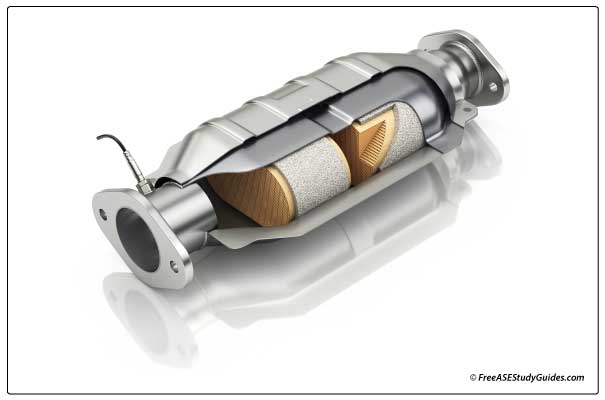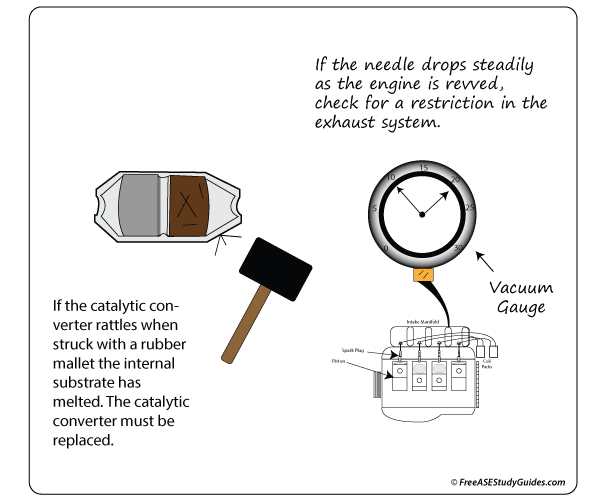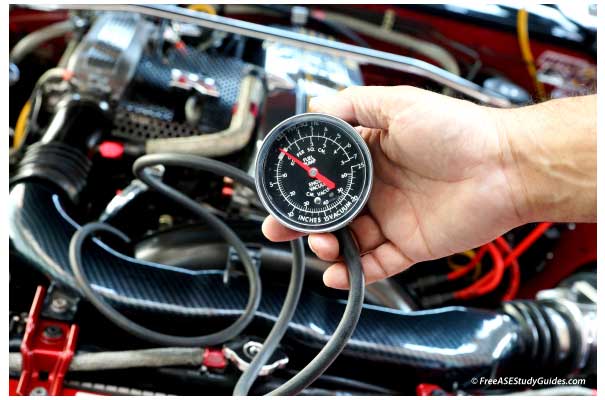Clogged Catalytic Converter

A catalytic converter has an aluminum oxide honeycomb coated with platinum and palladium. These components react to remove CO and HCs from the exhaust stream. A two-way catalytic converter works by oxidizing CO (carbon monoxide) and HC (hydrocarbon "unburned fuel") to CO2 (carbon dioxide) and water. A three-way catalytic converter also removes NOx (oxides of nitrogen) from the exhaust. NOx is formed at high cylinder temperatures. The EGR or variable valve system inhibits NOx formation.

When an engine runs rich, the catalytic converter works harder and runs hotter than intended. This heat can damage the substrate and cause it to degrade and melt, resulting in excessive back pressure. It can become loose. If the converter rattles when tapped with a plastic hammer, it must be replaced.

A clogged catalytic converter blocks exhaust flow, resulting in a loss of power and acceleration. If the restriction is severe enough, the engine may not run. Use a vacuum gauge to confirm an exhaust restriction. If the needle on the gauge drops slowly to ~10 "hg while increasing the engine speed to 2500 RPM, check the exhaust for a clogged catalytic converter.

Use an exhaust back pressure tester to confirm a restricted exhaust system. Remove the upstream oxygen sensor and screw in the backpressure tester fitting. Usually, the specifications require a backpressure below 1.0 psi. at idle, and no more than 4 or 5 psi. at snap-throttle. There's a big difference between a late-model vehicle and an older model. Always compare results with vehicle manufacturer specifications.